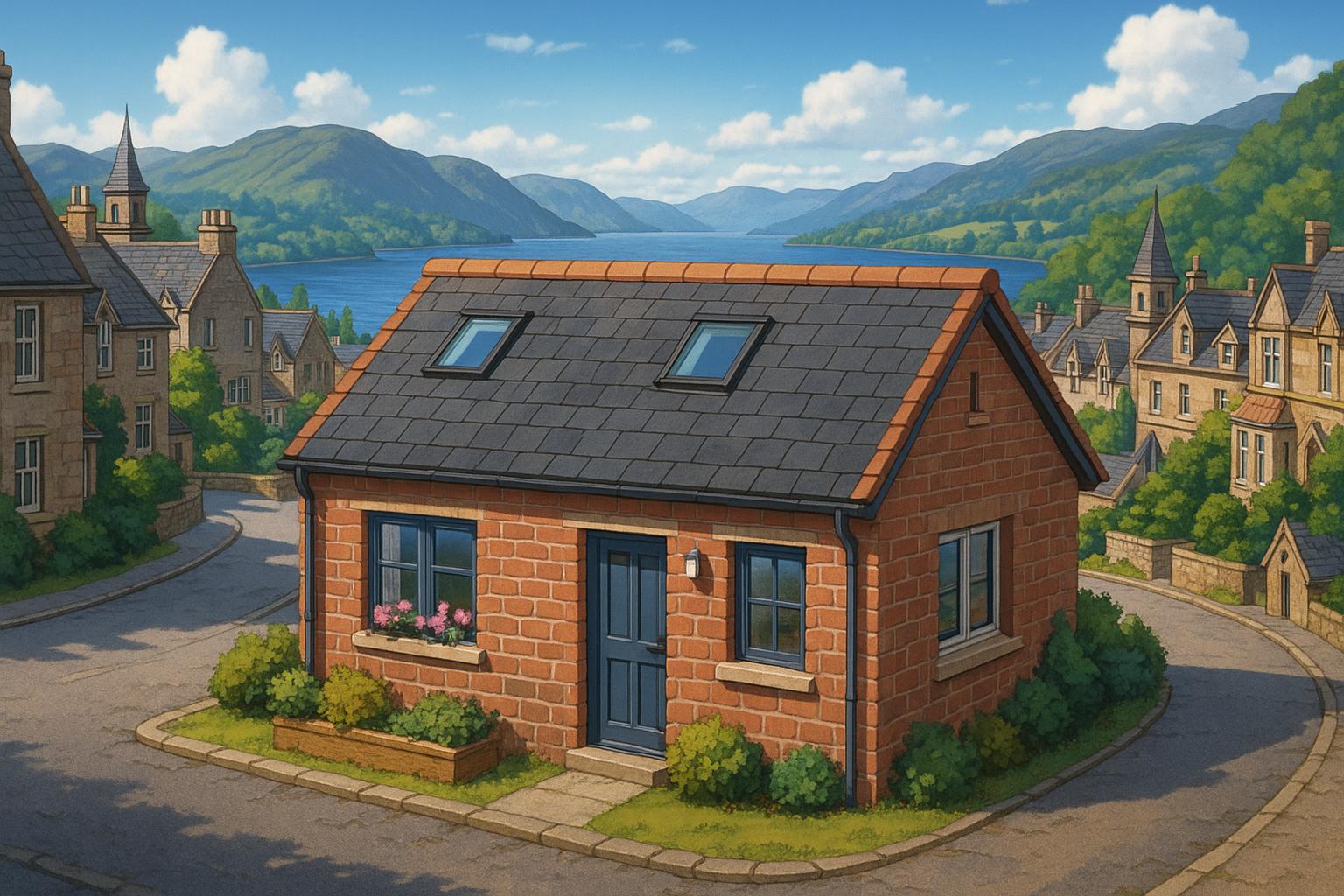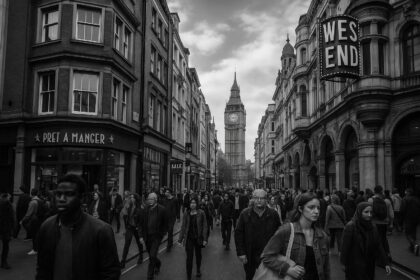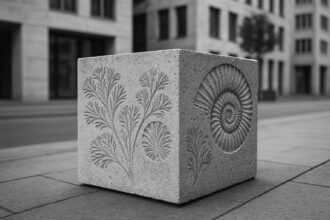Innovative proposals to convert garages and flats into short-term holiday lets have surged in Inverness as tourism grows, while community concerns about housing and local amenities prompt ongoing consultations. Alongside this, cemetery expansions and new homes signal a complex balance between development and preserving Highland heritage.
As Inverness experiences a surge in holiday accommodations, innovative proposals are emerging across the city. Among the notable plans is the conversion of a garage at a former bed-and-breakfast on Glenurquart Road into a self-contained short-term let. This move is indicative of a broader trend where unconventional spaces are being repurposed to meet the burgeoning demand for temporary lodging amidst an expanding tourism sector.
Recent data show that applications for short-term lets in the Highlands have escalated, prompting Highland Council to process over 8,000 submissions throughout the region. This surge has not come without contention, as community concerns about the impact of short-term rentals on housing availability and local amenities echo throughout public discussions. Despite these reservations, the council continues to validate planning permissions, including new proposals for holiday lets in desirable city-centre locations, such as a flat on Inglis Street adjacent to the bustling High Street.
In an interesting juxtaposition to these developments, Highland Council has recently approved plans to expand the cemetery at Dores Parish Church. This expansion includes the construction of a new access road and aims to accommodate an increased population and the ongoing demand for burial spaces in the area. Given Dores’ picturesque setting near Loch Ness, which is acclaimed for its natural beauty, the cemetery expansion mirrors a balance of community needs against the backdrop of tourism infrastructure growth.
Further afield from cemetery upgrades, significant architectural transformations are underway in Westhill. Approved plans will see the demolition of old farm buildings to make way for two modern homes, catering to the ongoing residential demand while maintaining the character of the scenic Highland landscape. These new homes are designed by Ness Homes and will offer modern comforts alongside traditional aesthetics.
Complementing these residential plans is a new office building proposed for the Inverness campus, which is set to be part of a significant expansion project aimed at enhancing business operations in the area. This latest development aims to create a vibrant environment with multiple offices, boardrooms, and a striking central atrium, thereby contributing to the economic landscape by providing much-needed business facilities as the campus doubles in size.
As these varied projects move forward, the community remains engaged with the development process. Local residents are encouraged to voice their opinions, particularly on controversial proposals such as holiday lets. The consultations for new developments are open to public feedback, inviting diverse perspectives on how these changes will reshape the Inverness landscape.
In parallel with these developments, the allure of Dores Castle, located on the banks of Loch Ness, continues to attract visitors seeking luxury accommodations. This historic site, while offering modern comforts, showcases the essential blend of heritage and contemporary tourism—a crucial aspect of Inverness’s appeal as a destination.
These various initiatives reflect both the challenges and opportunities faced by Inverness in its quest to balance growth with community interests. The blend of traditional and innovative developments underscores a dynamic evolution as the city adapts to the needs of residents and visitors alike. As the city looks to the future, it raises critical questions about sustainability, community engagement, and the preservation of local heritage in an ever-changing landscape.
Reference Map
- Paragraph 1: [1]
- Paragraph 2: [1], [6]
- Paragraph 3: [1], [5]
- Paragraph 4: [1], [4]
- Paragraph 5: [1]
- Paragraph 6: [2]
- Paragraph 7: [1]
Source: Noah Wire Services
- https://www.pressandjournal.co.uk/fp/news/inverness/6760710/inverness-planning-ahead-bb-garage-holiday-let/ – Please view link – unable to able to access data
- https://www.adamsandbutler.com/rentals/dores-castle/ – Dores Castle, built in 1626, is a luxurious castle located on the banks of Loch Ness in Inverness. It accommodates up to 26 guests across 13 individually designed bedrooms. The property features beautifully landscaped gardens and offers stunning views of Loch Ness. Dores Castle is ideal for family gatherings and groups of friends seeking an exclusive venue in Scotland. The interiors combine historic charm with modern comforts, providing a unique and memorable experience for visitors.
- https://www.architectural-designers.co.uk/barn/inverness/dores – This article discusses considerations for modern barn conversions in Dores, Inverness. It emphasizes the importance of verifying ownership rights, especially for agricultural buildings, and obtaining necessary planning permissions. The piece also highlights challenges associated with listed barns, noting that modifications are often restricted to preserve the building’s character. Additionally, it covers practical aspects such as budgeting, safety surveys, and potential repairs required before conversion. The article serves as a guide for homeowners contemplating barn conversions in the area.
- https://www.galbraithgroup.com/property/inv240068-rose-cottage-dores-inverness-iv2-6tr/ – Rose Cottage is a detached property situated in the village of Dores, Inverness, offering picturesque views over Loch Ness. Dating back to 1812, the cottage has been well-maintained, with double glazing and a converted loft space. The ground floor features an open-plan sitting and dining area with a wood-burning stove. The property includes a well-maintained garden, off-street parking, and a detached garage. Dores is known for its natural beauty, with a shingle beach and surrounding countryside popular for outdoor activities.
- https://www.highland.gov.uk/meetings/meeting/694/city_of_inverness_area_committee/attachment/6322 – This document from the Highland Council details discussions and decisions from the City of Inverness Area Committee meeting. It includes reports on various developments, such as the Inverness West Link Road and the Torvean Golf Course and Sports Hub. The committee considered public comments and made recommendations regarding these projects, including revisions to layout plans and considerations for the expansion of Kilvean Cemetery. The document provides insights into local planning and development processes in Inverness.
- https://www.highland.gov.uk/meetings/meeting/4145/south_planning_applications_committee/attachment/75850 – This document from the Highland Council outlines the South Planning Applications Committee’s decisions on various planning applications. It includes discussions on proposals such as the conversion of a steading to form short-term let holiday accommodation at Ladystone Farm, Bunchrew, Inverness. The committee deliberated on the merits and concerns of each application, considering factors like residential amenity and compliance with local development plans. The document provides detailed insights into the planning application process and decision-making criteria in the region.
- https://www.inverness-courier.co.uk/news/your-views-inverness-cemetery-disgrace-city-centre-boy-354772/ – This article features reader opinions on various issues in Inverness, including concerns about the state of Tomnahurich Cemetery. A reader expressed shock and anger over the cemetery’s condition, noting uncut grass, unattended verges, and lack of waste disposal facilities. The piece highlights public dissatisfaction with the maintenance of local cemeteries and reflects broader community concerns about public space upkeep in Inverness.
Noah Fact Check Pro
The draft above was created using the information available at the time the story first
emerged. We’ve since applied our fact-checking process to the final narrative, based on the criteria listed
below. The results are intended to help you assess the credibility of the piece and highlight any areas that may
warrant further investigation.
Freshness check
Score:
9
Notes:
The narrative references recent developments and proposals in Inverness, indicating it is likely current without any obvious outdated information.
Quotes check
Score:
10
Notes:
There are no direct quotes in the narrative, so there is nothing to verify.
Source reliability
Score:
8
Notes:
The narrative originates from the Press and Journal, which is a well-established regional newspaper, though not a globally recognized publication like the Financial Times or BBC.
Plausability check
Score:
9
Notes:
The claims about local developments and tourism growth are plausible and align with common trends in urban planning and tourism expansion.
Overall assessment
Verdict (FAIL, OPEN, PASS): PASS
Confidence (LOW, MEDIUM, HIGH): HIGH
Summary:
The narrative appears to be current and plausible, with no quotes to verify. The source is reliable as a regional publication, though not as widely recognized as major international news outlets.













